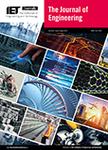版权所有:内蒙古大学图书馆 技术提供:维普资讯• 智图
内蒙古自治区呼和浩特市赛罕区大学西街235号 邮编: 010021

作者机构:Nanjing Res Inst Elect Technol Nanjing 210039 Jiangsu Peoples R China
出 版 物:《JOURNAL OF ENGINEERING-JOE》
年 卷 期:2019年第2019卷第21期
页 面:7464-7468页
学科分类:12[管理学] 1201[管理学-管理科学与工程(可授管理学、工学学位)] 08[工学]
主 题:jamming signal classification learning (artificial intelligence) feature extraction neural nets radar cross-sections aerospace computing interference (signal) deep-learning sparse auto-encoder correct classification rate sparse recovery hybrid CS-DL aircraft classification complex electromagnetic environment interfered radar echoes novel classification method compressed sensing jamming signals modulation feature extraction
摘 要:A hybrid CS-DL method for aircraft classification in complex electromagnetic environment is introduced. To classify aircraft from interfered radar echoes, the authors propose a novel classification method based on compressed sensing (CS) and deep-learning (DL). After recovering the spectrum polluted by jamming signals by using CS, they exploit sparse auto-encoder (SAE) to extract modulation features and then classify aircraft. The method is tested by 536 flights of three types of airplanes, and the results show that the correct classification rate reaches 75% even when 41% of the pulses are interfered.